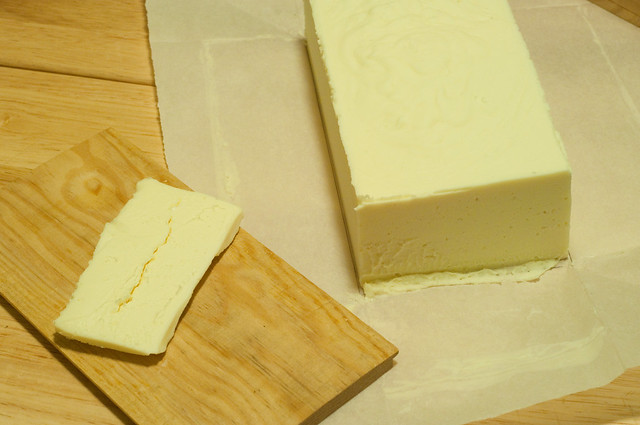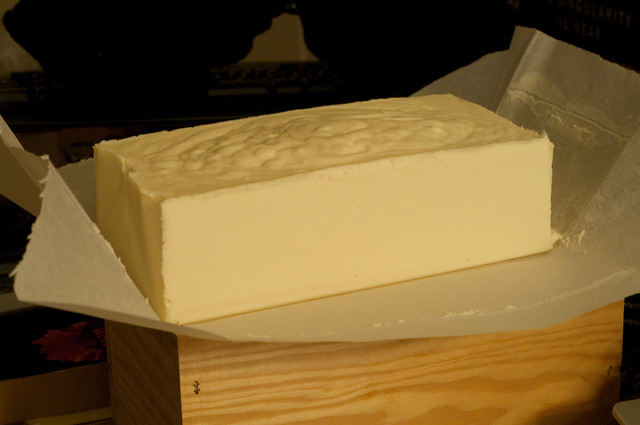I did my first batch with approx. 5.25c olive oil and .25c almond oil, unfortunately I read about superfatting AFTER making the batch so the lovely almond smell is pretty much non-existent.
It's been about 28 hours, of course I'm impatient and slid cast from mold early to check it out and while it's reasonably hard (somewhere between refrigerator butter and room-temp), and feels great on the skin, it has this rather ...how to phrase ...yucky odor. A family member has declared it as smelling "like a**."
Is this normal for almost pure olive oil soap? I don't know why but I thought it would be rather neutral.
Will this dissipate as it cures?
Also, how hard can I expect this batch to get and how long should I cure it? I spent about 10-12 minutes mixing with a stick blender and it seemed to achieve trace (lumps forming on surface instead of immediately absorbing back) but this is a very soft block, I'm told that olive oil makes quite a hard soap and so now I'm worried. *sigh
Thanks much in advance.
It's been about 28 hours, of course I'm impatient and slid cast from mold early to check it out and while it's reasonably hard (somewhere between refrigerator butter and room-temp), and feels great on the skin, it has this rather ...how to phrase ...yucky odor. A family member has declared it as smelling "like a**."
Is this normal for almost pure olive oil soap? I don't know why but I thought it would be rather neutral.
Will this dissipate as it cures?
Also, how hard can I expect this batch to get and how long should I cure it? I spent about 10-12 minutes mixing with a stick blender and it seemed to achieve trace (lumps forming on surface instead of immediately absorbing back) but this is a very soft block, I'm told that olive oil makes quite a hard soap and so now I'm worried. *sigh
Thanks much in advance.

















































